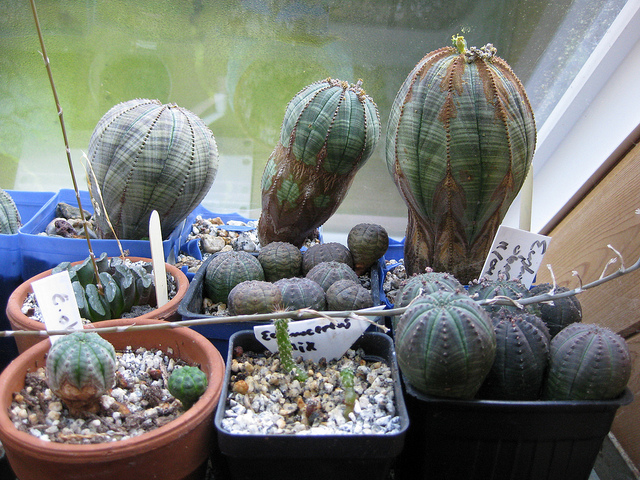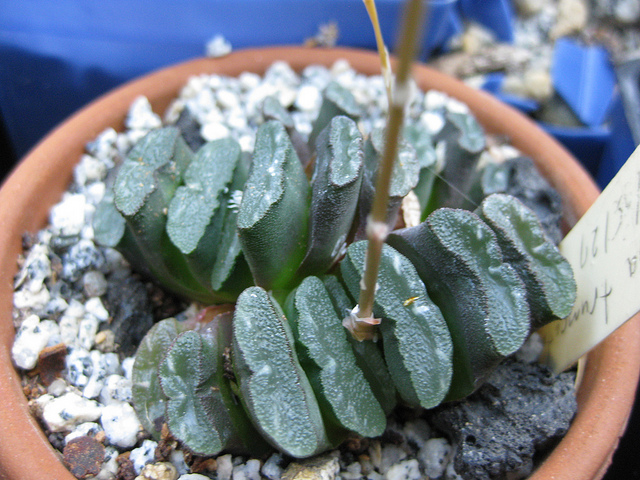bulbosity
I suppose you could say I am a patient man. I am fond of things that grow slowly like tortoises and ancient rainforest trees.
For the past couple of decades I have been absorbed in the hobby of growing various extremely slow growing plants from seed. These ones are from the driest parts of Southern Africa, an extreme environment in which they’ve evolved curious structural adaptations to survive during long periods of drought. Euphorbia obesa has done away with all manner of leaves or even spines and bides its time hunkering between the pebbles of its native Karoo region trying not to get noticed. Just in case, it protects itself with a toxic milky sap should anything want to give it an exploratory nibble. Once a year, toward the end of summer, a tiny cluster of flowers forms, male and female on different plants, and they await the visitation of some specially adapted insect to pollinate them. As these particular insects don’t inhabit the environs of my office, I hand pollinate the female flowers be means of a tiny sable paint brush which I carefully dust with pollen from the male one. Timing is everything and I have to be lucky enough to have a male and a female flowering simultaneously in my little collection. The result, over the past fifteen years, has been a number of bulbous progeny, and I feel proud to be propagating this strange little plant that is critically endangered in the wild and doing it right here on my Canadian windowsill.
Hailing from the same general area is the Haworthia truncata, whose contractile roots pull it down into its gravel habitat when things get a bit too hot. In order to absorb enough light for photosynthesis in its partially subterranean situation,H. truncata has evolved translucent windows at the end of its truncated leaves, which funnel light deep down into the plant.
Though it may take a long time, I find growing these odd plants to be intensely rewarding. They ground me in time and I love the thought of them sitting there stolidly in their pots adding a scant millimeter of growth each year, or maybe putting out a brief little inflorescence, while the world of humanity whirls frantically around them. They must experience time quite differently from you and I. Some of I’ve had for over 20 years, germinated from seeds ordered from long-vanished seed merchants. Yet even in the relative safety of my home, the existence of my botanical companions still hangs in the balance. Knocked to the floor by a rambunctious cat or infected with rot by some malevolent spore, each potentially ancient life could be snuffed out in a precipitous instant. This makes me love them all the more and I hope to be able to tend them for many years to come.






Salut Oliver
In another life you must’ve been tending to millenia old bunsaïs in some remote asian mountain side!